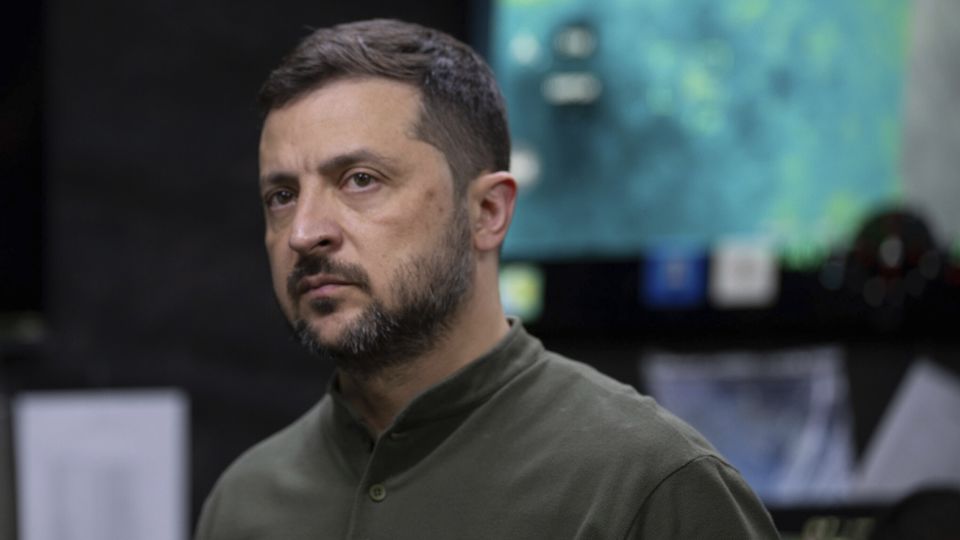A diplomatic scramble unfolded Saturday after President Donald Trump announced he would meet his Russian counterpart, Vladimir Putin, next week in Alaska, as European leaders rushed to understand the terms of the meeting and ensure Ukraine was not being left out of discussions about its future.
In the English countryside Saturday, European officials presented their case to Vice President JD Vance in a hastily arranged meeting. The leaders of several European nations said afterward that while they supported Trump’s diplomatic efforts, any peace talks must be preceded by a ceasefire and Ukraine itself must be actively involved.
Ukrainian President Volodymyr Zelensky was not named as a participant in the Alaska summit, to take place Friday between Trump and Putin. However, the White House has not completely ruled out including Zelensky in some meetings, two sources familiar with the matter told CNN. One White House official stressed that anything involving Zelensky would likely happen after the Trump-Putin meeting.
The summit has come together very quickly, and details are still in flux. An exact location has yet to be announced.
A White House official said Trump remained “open to a trilateral summit with both leaders” but that “the White House is planning the bilateral meeting requested by President Putin.”
Since Trump unveiled plans to meet with Putin in a post to social media Friday, there has been an intensive diplomatic effort behind the scenes to get US allies on board.
Trump’s announcement notably did not say whether or when Zelensky would be included in the process. Zelensky and European leaders, meanwhile, have been emphatic that Ukraine needs to be part of any discussions about ending the war.
In the Saturday meeting hosted by Vance at the manor home of the British foreign secretary, European officials laid out their terms and sought more information from US officials about the plan Putin presented Wednesday to US envoy Steve Witkoff.
They emphasized a number of points, Western officials said: that Ukraine must be involved in the talks, that a ceasefire is in place before other steps are taken, and that if Ukraine makes territorial concessions, Russia must also concede land it currently occupies.
A statement afterward from the leaders of France, Italy, Germany, Poland, the United Kingdom, the European Union and Finland said the group welcomed “President Trump’s work to stop the killing in Ukraine, end the Russian Federation’s war of aggression, and achieve just and lasting peace and security for Ukraine.”
But it spelled out terms of a peace plan that appeared to differ from the one Putin has put forward, in which he is seeking significant territorial concessions, according to Western officials.
“Ukraine has the freedom of choice over its own destiny. Meaningful negotiations can only take place in the context of a ceasefire or reduction of hostilities. The path to peace in Ukraine cannot be decided without Ukraine,” the joint statement read. “We remain committed to the principle that international borders must not be changed by force. The current line of contact should be the starting point of negotiations.”
The statement also said any diplomatic agreement to end the war must include “robust and credible security guarantees that enable Ukraine to effectively defend its sovereignty and territorial integrity.”
The terms amounted to an attempt by European leaders to scramble a response to the rapidly unfolding diplomacy, which was set in motion this week with Witkoff’s meeting in Moscow.
Pressed by reporters for details on the contours of a deal, Trump indicated Friday that it could include “some swapping of territories.”
The way the Europeans understand it, Putin presented a proposal that would require Ukraine to give over the entire eastern Donbas region, which Russia partially occupies. But the exact contours of the plan remained somewhat unclear, even after several follow-up phone conversations between the Europeans and Secretary of State Marco Rubio and Witkoff.
The fate of the two other regions that have been in Moscow’s sights — Kherson and Zaporizhzhia, which Russia only partially occupies — wasn’t clear. Nor was the status of US security guarantees going forward, the officials said.
That has left European leaders, who have expressed concern about the possibility of Ukraine ceding territory, rushing to get more details on what a ceasefire would entail.
To allay some of those concerns, Vance convened the hourslong meeting Saturday with UK Foreign Secretary David Lammy and European and Ukrainian officials to lay out the US’ view of negotiations, as well as American officials’ understanding of Russia’s stance. Witkoff attended the meeting virtually.
A US official told CNN that “significant progress” was made, but it is still unclear whether there is European or Ukrainian buy-in heading into Friday’s critical meeting.
After Saturday’s meeting, Zelensky said he believed the US was listening.
“Our arguments are being heard. The dangers are being taken into account,” he said in an address.
For more CNN news and newsletters create an account at CNN.com

